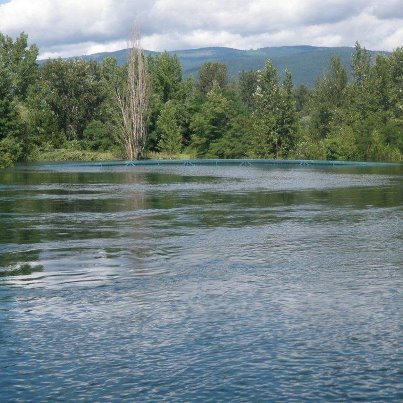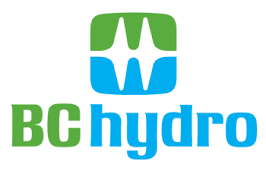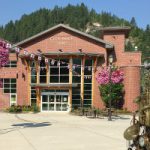UPDATE: July 17/18 floods have been included as qualifying events for flood relief funding
Finally, some good news for a region beseiged by calamitous weather events – the province’s Disaster Financial Assistance Program has designated overland flooding from June 3 to 12 and June 22 to July 2 as “qualifying events”, meaning home owners and small business owners may qualify for between $1,000 and $300,000 in relief funding to repair uninsured damage caused by the floods. July 17/18 flood events have now been included in the designation as well.
Qualifying for June 3 to 12 in the West Kootenay are: RDKB(Electoral Area E) and RDCK (Electoral Areas A, B and C), while June 22 to July 2 qualifying areas include RDCK and RDKB, including all member municipalities – meaning Castlegar, Nelson and Trail, among others.
The Johnsons Landing mudslide on July 12 has also been designated a qualifying event.
For residents, this means they can apply for funding to repair flood damage to their primary residences (not secondary or revenue properties), and small business owners can do likewise, so long as the damages are uninsured (the funding doesn’t cover deductibles.
Castlegar director of financial services Andre Buss says this will be a boon to many residents who would otherwise be forced to foot significant bills in the wake of recent flooding.
“The city got many calls from people whose basements were flooded, but our hands were tied,” he said, explaining the city’s stormwater drainage systems are usually more than up to the task, but there was simply no way for the city to predict or prepare for the extreme weather which has punished the city in the past month or so.
“This Disaster Relief Assistance will give homeowners an opportunity to be reimbursed for some of the costs they incurred due to the flooding.”
It’s also good news for Castlegar taxpayers, see http://castlegarsource.com/news/disaster-designation-saves-castlegar-taxpayers-considerable-cost-20173#.UBHXdGGvKSo
To see which events and areas qualify, visit http://www.pep.bc.ca/dfa_claims/dfa.html
Johanna Morrow, manager, recovery and funding programs with Emergency Management BC, says this year has seen unheard-of natural disaster.
“Usually, on our website, you’ll see one or two events – right now, there are 14,” she said. “This is a pretty unprecedented season for us.”
There’s only a 90-day window between the event and the application deadline, so it’s critical applicants respond immediately – application forms and information can be found on the webpage above.
Morrow also sent a four-page Q&A form that addresses most of the questions her office fields:
What kind of disaster relief can residents expect?
The province continues to support the recovery efforts of the local governments. We have also authorized Disaster Financial Assistance to supplement these efforts.
DFA helps those impacted by a disaster where the losses could not be insured or where other programs are not available. It provides or reinstates the necessities of life, including help to repair and restore damaged homes and to re-establish or maintain the viability of small businesses and working farms.
Disaster financial assistance covers 80 per cent of the cost of essential items not covered by insurance, for claims exceeding $1,000 up to a maximum claim of $300,000.
The Province is not helping in isolation: Other agencies provide services, like the Red Cross, Salvation Army and Mennonite Disaster Council. We also augment the good work done by local businesses, financial institutions and community volunteers.
Why does B.C. have a disaster fund?
Because it’s the right thing to do. DFA helps people who, through no fault of their own, find themselves in desperate need of help that they couldn’t have protected themselves from with insurance.
Every province and territory in Canada has a DFA program. BC works closely with its provincial and federal counterparts to share information and develop best practices for disaster financial assistance.
What does DFA cover?
DFA provides or reinstates the necessities of life, including help to repair and restore homes and, in the case of a small business or farm, help to restore livelihoods. Applicants can apply in more than one category. For example if someone’s home and farm were damaged, they could apply for DFA in the home owner category and the farm category. To be eligible in the home category, it must be their principal residence. In the farm or small business category, it must be their livelihood; i.e. the farm or business must be their major source of income.
Eligible damages in the homeowner category are limited to the principal residence. This can include structural damage and compensation for essential items lost or damaged in the flood. Land damage is not eligible except to provide essential access to the home.
Eligible damages in the farm category can include clearing farm land that is in production or fallow. It is important to note however, that debris removal costs cannot exceed the assessed value of the affected land and that total compensation cannot exceed the DFA maximum claim of $300,000. Also DFA cannot compensate for losses that are covered under other government programs. This is why we cannot compensate for crop losses as there are insurance and income loss programs available through Ministry of Agriculture for these types of losses.
How quickly will people be paid?
We know how difficult this situation is for those who have flood damage and our office works as quickly as we can to help people. The actual time it takes depends on the number of applications we receive and the complexity of the application.
In small local disaster we are often able to pay a homeowner or tenant DFA claim in six weeks or less of receipt of the application. However, when the disaster is large and widespread, it will take longer.
For homeowners, once we receive the application we first need to confirm ownership and principal residence. We then assign the file to our Field Manager who will contact the applicant to set up a site visit. The evaluator will meet with the applicant, explain the program, answer questions, and assess the damage. The evaluator’s report is forwarded to our office for adjudication and, if there is eligible damage, a letter and cheque are sent to the homeowner.
For small business and farm owners, the process takes more time. We also need to confirm income eligibility be reviewing income tax returns and financial statements. And the assessment of losses can also be more complicated.
Why don’t landlords qualify?
DFA exists to help restore your principal residence – your home – and for small business owners – your livelihood. The goal of the program is to ensure that people have a safe dry place to live. DFA is not insurance. It’s a helping hand to provide essential support so people can get back on their feet. Revenue property and vacation property are not essential housing.
Tenants who have been affected by this disaster can receive DFA to compensate them for their personal losses. If landlords are unable or unwilling to repair the home, BC Housing staff are available to help them find alternate rental accommodation.
In some circumstances we can compensate for repairs to rental property. If the property owner can demonstrate that property rental is their livelihood – i.e. rental income is their major source of income, that they personally manage this business on a full time day to day basis, and that without this assistance their business could be in jeopardy, they may be eligible for DFA as a small business owner.
I have heard that DFA may not be available for small business because they could get insurance. Is this true?
Although Disaster Financial Assistance (DFA) may be limited for small businesses, they should still complete an application and we will do whatever we can within the legislation.
DFA is only for uninsurable losses, and cannot be used for the deductible portion of insurance.
We are currently working with the Insurance Bureau of Canada to determine if small businesses in this area were eligible to purchase flood insurance. If they were not eligible to purchase flood insurance then they may qualify for DFA.
For businesses, flood insurance is usually available for overland flooding damage to business structures. Business owners make risk assessments and may decide not to purchase insurance, or to purchase insurance with a high deductible (i.e., to cover them only for catastrophic losses).
Notably, insurance for flood damage to a business, if available, would only be for buildings. It would not cover land damage. Although DFA does not cover loss to land, we will ensure that an eligible business has essential access. This could include debris removal and grading driveways.
Are small business owners who could not afford private insurance eligible for DFA?
Unfortunately if insurance was available, they would not be eligible for DFA. DFA is only for uninsurable losses. As an aside, DFA also cannot be used for the deductible portion of insurance.
Flood insurance for businesses is an issue in most events. Insurance is usually available for overland flooding damage to business structures. Business owners make risk assessments and may decide not to purchase insurance or to purchase insurance with a high deductible (i.e. to cover them only for only for catastrophic losses).
Also, insurance for flood damage to a business, if available, would only be for buildings. It would not cover land damage. Although DFA does not cover loss to land, we will ensure that an eligible business has essential access. This could include debris removal and grading driveways.
Our message to small businesses is that although DFA may be limited for them, they should still complete an application and we will do whatever we can within the legislation.
Do you pay for replacement cost?
DFA is not insurance so we don’t look at ‘replacement value’ versus ‘depreciated cost’.
For personal possessions we compensate for losses based on a preset list of essential items and set value for losses. For example a destroyed couch would be compensated based on the value of a typical couch (currently $575) regardless of the type or quality of sofa the applicant actually had.
For infrastructure damage our compensation is limited to what it would cost to repair the damage caused by the event. We calculate the compensation using standard industry rates for such things as drywall repair, carpet removal and replacement, debris removal, etc.
Is DFA available for First Nation Communities?
The Disaster Financial Assistance program works closely with Aboriginal Affairs and Northern Development Canada (AANDC) to ensure that we are able to provide the same services and support to First Nations communities and impacted individuals as we do for other communities in B.C.
The same eligibility and documentation requirements for disaster financial assistance that apply to local authorities also apply to First Nations.
First Nations are required to prepare and submit their own claims to the Provincial Emergency Program, even if they participate with a local authority in response. Local authorities are not responsible for claiming costs incurred by First Nations, even if they share emergency operations.
Do we know how many British Columbians are considered uninsurable (because of where they live)?
Overland flooding insurance is not available for residential properties, and most of the populated areas of B.C. are in flood plains. Therefore, it’s impossible to estimate just how many properties and residents could be impacted by a particular flood event.
However, it’s worth noting the Province has made significant investments in flood prevention projects in recent years. As well, many local governments have programs in place, including covenants on properties to limit the flooding danger by restricting how and where you can build.
How much money have homeowners received from DFA over the past 10 years?
Since 2000 the Province has paid over $25 Million in DFA directly to BC residents to help them recover from disasters.
Why do we keep bailing people out?
Because it’s the right thing to do. DFA helps people who, through no fault of their own, find themselves in desperate need of help. Every province and territory in Canada has a DFA program, to help people start to get back on their feet after a disaster for which insurance was not available.
Quote from Regulation:If DFA has been provided on two occasions to repair, rebuild or replace a structure in a disaster prone area, further DFA requests are ineligible unless after the second occasion, all corrective or preventive actions reasonably possible to avoid recurrence of the damage or destruction were taken.
Is it time to restrict building on flood plains or is that unrealistic?
That question is best directed to municipal officials. Since 2004, land-use guidelines have been firmly in the hands of local governments. Local governments are responsible for planning for and appropriately zoning land for a variety of uses.


























Comments